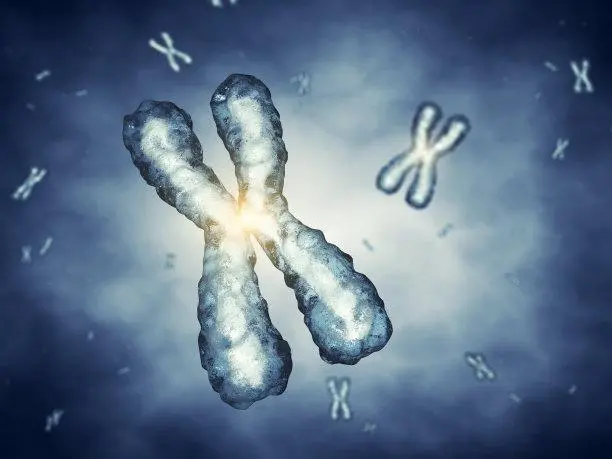Introduction: Lymphocytic leukemia is caused by a variety of reasons. It may be related to chemical, physical, biological factors, genetics, etc. The cause of the disease has not yet been found, but it is still in the stage of speculation. For patients who already suffer from lymphocytic leukemia, they will have headache, fever, loss of appetite, nausea, vomiting and other common phenomena. Avoid getting sicker. What are the symptoms cause and treatment of lymphocytic leukemia

1. Causes of lymphocytic leukemia
The cause of lymphocytic leukemia has not yet been found, and it is speculated that it may be related to chemical, biological, genetic, biological factors, viral infection and other phenomena. Researchers are trying to find the cause of its pathogenesis and treat it. In chemistry, researchers have found that patients with bone marrow dysplasia and long-term exposure to chemicals may suffer from leukemia. In terms of genetics, if both parents suffer from the disease, their children will also suffer from the disease. Generally, the patients with this disease are mostly the elderly. What are the symptoms cause and treatment of lymphocytic leukemia
2. What are the symptoms of lymphocytic leukemia
A. Fever
Fever is a common symptom, so it is easy to ignore its cause in peacetime. However, when suffering from lymphocytic leukemia, fever is one of the most common symptoms. It will make the patient’s body temperature at a height of 39.1~40 °C, and the body temperature will fluctuate greatly within a day, which may cause the patient’s body temperature to rise. When ascending, the lips appear pale and the whole body trembles.
B. Progressive anemia
Fatigue and drowsiness will appear. When symptoms of progressive anemia appear, the color of the nail bed of the patient will be pale, and the whole person will look extremely tired. It is one of the clinical manifestations of the patient suffering from lymphocytic leukemia.
C. Bleeding
Bleeding symptoms are spontaneous and recurring. Generally, bleeding can be seen in the patient’s gastrointestinal tract, and sometimes there is blood in the patient’s stool. Sometimes there may be bleeding gums, hematuria, etc.

D. Bone and joint pain
Bone and joint pain is also one of the clinical manifestations, and patients often feel the bone and joint pain in the limbs is particularly obvious.
3. How is Lymphatic Leukemia Diagnosed
A. Physical examination
The physical condition of the patient can be understood through physical examination. During the examination, inspection and palpation will be adopted. During the inspection, it is first necessary to check whether the patient has bleeding spots or ecchymosis. In order to understand the degree of bleeding in the patient, the doctor also needs to touch the patient’s abdomen, neck and clavicle to check the patient’s spleen and lymph nodes, so as to diagnose the corresponding disease in the patient’s body, and finally as a diagnosis of whether the patient has the disease Evidence for lymphocytic leukemia
B. Routine blood test

Routine blood test is mainly to understand the number of white blood cells, platelets and hemoglobin content in the patient. During the examination, it is necessary to draw blood for the patient. If the patient is dizzy with blood or needles, he needs to cooperate as much as possible.
C. Blood culture
The main purpose of blood culture is to know whether there are unknown pathogenic microorganisms in the patient’s body, so as to diagnose whether the patient has an infection. When performing blood culture, we can roughly understand the type of bacteria in the patient’s body through culture, which is used as a diagnosis. Evidence that the patient has lymphocytic leukemia.
D. Imaging examination
When performing imaging examinations, we need to use chest X-rays and CT scans for patients to understand the patient’s physical condition. The test can diagnose whether a person has a lung infection. When a CT scan is performed, it is mainly to find out whether the lymph nodes of the patient are swollen. When the test is performed, the patient needs to be given an imaging agent so that accurate results can be obtained.
4. How to treat lymphocytic leukemia, What are the treatment of lymphocytic leukemia
A. Chemotherapy

Chemotherapy is used to treat patients with lymphocytic leukemia. This method can mainly kill tumor cells in the patient’s body. Generally, during chemotherapy, drugs such as cyclophosphamide, daunorubicin and doxorubicin are needed. They have a very good effect on the diseases to be treated, and the patient may be in more pain during chemotherapy, so the patient’s family must give the patient a certain amount of warmth to relieve the pain on his body.
B. Symptomatic and supportive treatment
The symptomatic support method is mainly to prevent infection and improve the anemia of the patient, so as to control the bleeding condition of the patient. Blood transfusion can be used to improve the anemia of the patient. When performing symptomatic treatment, the patient is required to actively cooperate with the doctor. , the doctor needs to understand the basic condition of the patient in detail, so that the corresponding treatment can be taken, so that the patient can recover as soon as possible.
C. Surgery
A patient with lymphocytic leukemia can use surgery to relieve his condition. Generally, hematopoietic stem cell transplantation is used for surgery. This method is mainly to transform the stem cells in the body into normal hematopoietic cells. The patient’s body functions can be restored and they can lead a normal life. However, when performing surgical treatment, it is necessary to look at the patient’s immune function. If the immune ability is strong, the risk may not be too high, but if the autoimmunity is too weak, the risk is relatively large and will be a serious threat. to the patient’s life.
D. Drug treatment

Drug therapy is generally used in clinical practice. For patients with lymphocytic leukemia, we can give her drugs such as imatinib, ponatinib, and dasatinib. Cancer cells, and attack cells with special chromosomes, so as to achieve the effect of relieving the patient’s condition. When taking drug treatment, the patient needs to obey the doctor’s order, so that the treatment effect can be achieved. After taking the medicine for a period of time, you need to go to the hospital for a relevant physical examination to understand your physical recovery status. The doctor needs to prescribe a drug treatment plan for the patient, so as to ensure that the patient’s body is in a healthy state for drug treatment.
Conclusion
Conclusion: Lymphatic leukemia is a blood tumor disease. When suffering from lymphocytic leukemia, patients will have symptoms such as anemia, bone and joint pain, and fever. When they have fever, they may not attract our attention, thus making the condition worse. Go to the hospital for relevant examinations to prevent the condition from getting worse. Read more updates and tips about health on http://www.facefof.com
